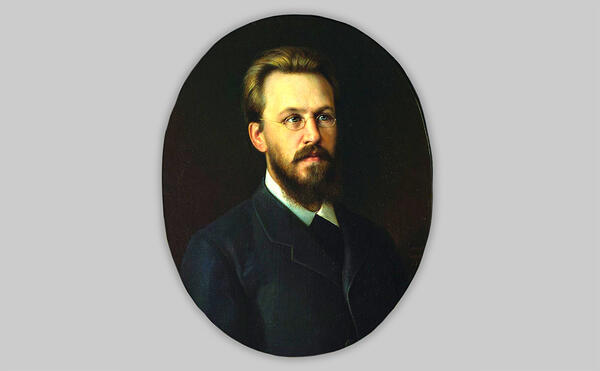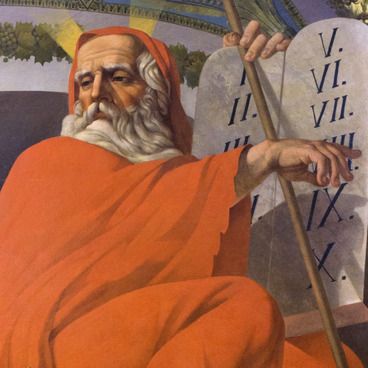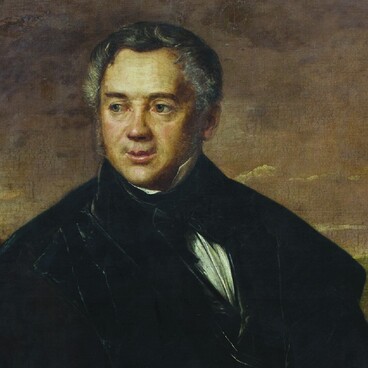Vladimir Sukachev is a famous public figure of Irkutsk and Siberia, a philanthropist, the founder of the first picture gallery beyond the Urals. By the 20th century, the gallery housed about a hundred artworks — mainly by famous Russian and Western European painters. In 1920, Sukachev’s collection became state property and part of the city museum, and in 1936, it became part of an independent art museum.
Sukachev studied for two years at the Faculty of Law at the St. Petersburg University, and in 1871, he transferred to the Kiev University of St. Vladimir, where he studied biology. He returned to Irkutsk to find three-quarters of the city destroyed by the great fire of 1879. Many administrative and educational buildings were burnt down, artworks were lost, residents were deprived of their homes and property. At his own cost Vladimir Sukachev built an old people’s home for women and an orphanage.
He was a mayor and served for three terms from 1885 to 1898. During this period, the telephone and electricity appeared in Irkutsk, water supply and sewerage were modernized, the Voluntary Fire Society was established, and the ferry crossing the Angara was replaced with a pontoon bridge.
The portrait of Sukachev was painted by an artist from the capital Vasily Khudoyarov. His family included serf artisans and artists who carried out lacquer painting for the St. Petersburg and Moscow estates of Nikita Demidov. In 1858, Khudoyarov received his freedom and entered the history painting class at the Academy of Arts. The artist actively participated in academic exhibitions, painted portraits, landscapes, genre and historical subjects, took commissions of the Emperor’s family.
Sukachev appreciated the talent of the painter and in the early 1880s commissioned four paintings by Khudoyarov for his new Irkutsk estate, including his own portrait. Additionally, this commission prescribed the artist to make two copies of Western European paintings and to paint a portrait of Emperor Alexander III. It was a pair portrait to the image of the Emperor’s wife Maria Feodorovna. Sukachev acquired the portrait from the famous artist Konstantin Makovsky.
The portrait from the museum collection features Vladimir Sukachev at the age of 33. Khudoyarov painted him as an ‘elegant Siberian’, refined and educated — these are the words the French traveler Jules Legras used to describe Sukachev in his memoirs.
Sukachev studied for two years at the Faculty of Law at the St. Petersburg University, and in 1871, he transferred to the Kiev University of St. Vladimir, where he studied biology. He returned to Irkutsk to find three-quarters of the city destroyed by the great fire of 1879. Many administrative and educational buildings were burnt down, artworks were lost, residents were deprived of their homes and property. At his own cost Vladimir Sukachev built an old people’s home for women and an orphanage.
He was a mayor and served for three terms from 1885 to 1898. During this period, the telephone and electricity appeared in Irkutsk, water supply and sewerage were modernized, the Voluntary Fire Society was established, and the ferry crossing the Angara was replaced with a pontoon bridge.
The portrait of Sukachev was painted by an artist from the capital Vasily Khudoyarov. His family included serf artisans and artists who carried out lacquer painting for the St. Petersburg and Moscow estates of Nikita Demidov. In 1858, Khudoyarov received his freedom and entered the history painting class at the Academy of Arts. The artist actively participated in academic exhibitions, painted portraits, landscapes, genre and historical subjects, took commissions of the Emperor’s family.
Sukachev appreciated the talent of the painter and in the early 1880s commissioned four paintings by Khudoyarov for his new Irkutsk estate, including his own portrait. Additionally, this commission prescribed the artist to make two copies of Western European paintings and to paint a portrait of Emperor Alexander III. It was a pair portrait to the image of the Emperor’s wife Maria Feodorovna. Sukachev acquired the portrait from the famous artist Konstantin Makovsky.
The portrait from the museum collection features Vladimir Sukachev at the age of 33. Khudoyarov painted him as an ‘elegant Siberian’, refined and educated — these are the words the French traveler Jules Legras used to describe Sukachev in his memoirs.



